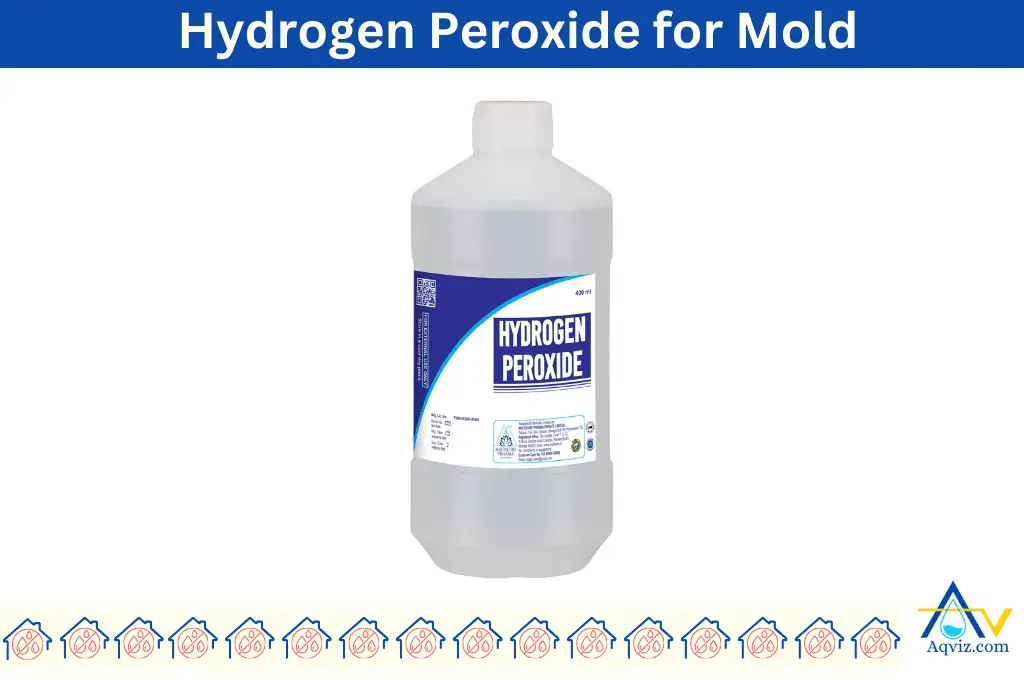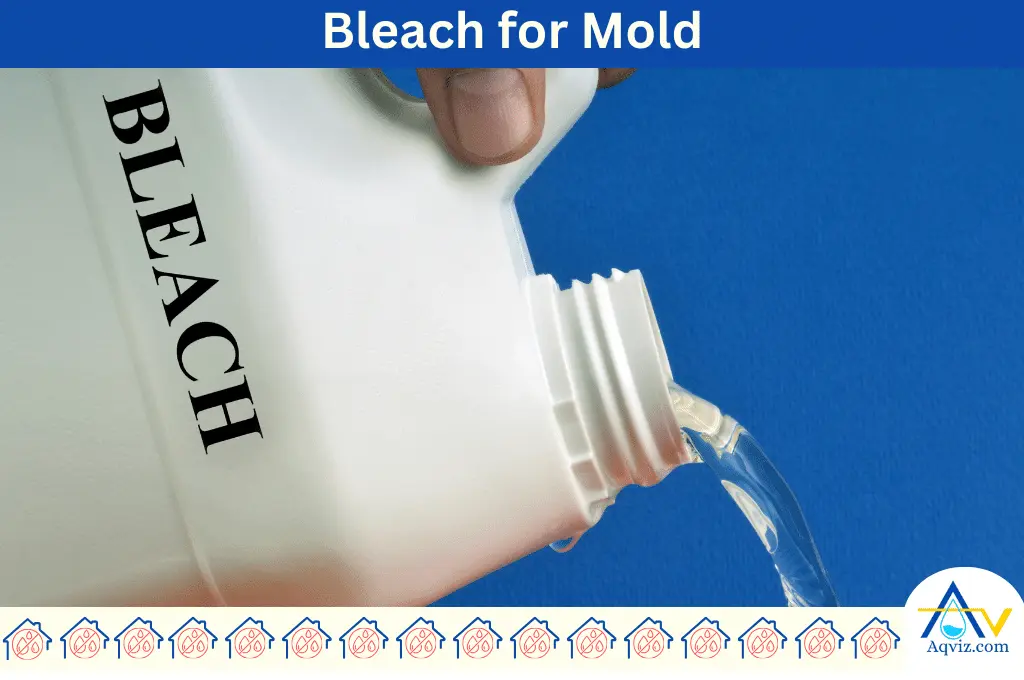How to Remove Basement Mold in 5 Ways?

Basement molds are fungi that grow in multicellular filaments, forming colonies on the organic surfaces in the basement. Basement mold causes to pest attraction, musty odor, poor indoor air quality, increased health risk, and structural damage over time. To prevent these negative impacts basement mold should be removed by following 5 ways.
5 Ways to Remove Basement Mold
- Remove Basement Mold Using Hydrogen peroxide
- Remove Basement Mold Using Vinegar Spray
- Remove Basement Mold Using Baking Soda
- Remove Basement Mold Using Borax
- Remove Basement Mold Using Bleach
These 5 ways help to mold remediation and keep the basement floor and walls clean. To prevent basement mold, the basement should waterproof, install a dehumidifier, sump pump, and french drain, and improve the basement ventilation properly. Basement molds are different in types among them black mold is the most dangerous fungi that causes severe health impacts to the human.
1. Remove Basement Mold Using Hydrogen peroxide
You can use hydrogen peroxide to remove the mold in the basement. This process will take 10-15 of waiting time and 2 min per square meter. This will cost $1-$2 per 1 Oz of liquid Hydrogen Peroxide. You should follow the below steps to clean the basement.
- Ensure proper ventilation by opening windows or using fans before using the H2O2 in the basement.
- Mix equal parts of hydrogen peroxide and water in a spray bottle.
- Spray the mixture on the moldy areas such as basement walls, floors, and other fixtures and wait 10-15 minutes.
- Scrub the H2O2 spread area using a brush or sponge to remove the mold stains and residue. Rinse the area with clean water and dry it thoroughly.
You should repeat this process if the area is heavily molded.

2. Remove Basement Mold Using Vinegar Spray
You can use vinegar to remove and clean the basement mold. This will take 30 min to 1 hour waiting time and will cost $3-$4.5 per gallon of vinegar. These are the steps to clean the basement mold using vinegar.
- Mix equal parts of white vinegar and water in a spray bottle. Shake well to combine.
- Spray the vinegar solution directly onto the moldy areas to kill the mold.
- Let it stay for about an hour to kill the mold.
- Scrub the area with a brush or sponge to remove the mold stains.
- Rinse the area with water and dry it thoroughly using a clean cloth or towel.

3. Remove Basement Mold Using Baking Soda
Baking soda (Sodium bicarbonate) can be used to remove the mold in the basement. This mold remediation process will take 10-15 min of waiting time to loosen the mold and the cost will be $0.8-$1.5 per Lb. You will need spray, and scrub equipment to use the baking soda in the basement.
- Mix one tablespoon of baking soda with a cup of water in a spray bottle.
- Shake it well to dissolve the baking soda.
- Spray the baking soda on the basement walls and floors.
- Let it stay for about 10-15 minutes.
- Scrub the area with a brush or sponge to remove the mold stains.
- Rinse the area with clean water and dry it thoroughly.

4. Remove Basement Mold Using Borax
Borax is typically named as Sodium tetraborate. Borax can be used to remove the mold in the basement in 10 minutes with spending $10-$15 per 1 Oz. Follow these 5 steps to remove the mold using borax.
- Mix one cup of Borax with one gallon of water.
- Use a scrub brush or sponge to apply the Borax solution to the basement walls and floors.
- Scrub the moldy spots well to remove the mold.
- Let the Borax solution stay on the surface for about 10 minutes.
- Rinse the area with clean water and dry it thoroughly.

5. Remove Basement Mold Using Bleach
Bleach is typically named Sodium hypochlorite which is a popular cleaning agent in the house. Bleach can be used to remove and clean the basement mold in the basement floor and walls. This will take 15 minutes and will cost $4-6 per gallon. When you clean basement mold you should follow these steps.
- Open windows and openings in the basement to increase ventilation.
- Mix one cup of bleach with one gallon of water in a bucket.
- Dip a brush or sponge into the bleach solution and scrub on the basement floor and walls.
- Let the bleach stay on the basement surfaces for about 15 minutes.
- Rinse the basement area with clean water and dry it thoroughly.

What is Basement Mold?
Basement molds are fungi that grow in multicellular filaments, forming colonies on the organic surfaces in the basement. The most favorable temperature for the basement molds is between 77°F and 86°F (25°C and 30°C). Higher humidity, less sunlight, lower temperature, and organic surface are the growing factors for the basement mold. The mold in the basement causes pest attraction, musty odor, poor indoor air quality, increased health risk, and structural damage over time.
What are the Basement Mold Types?
Basement molds are mainly 6 types. These molds are grown under different temperatures in the basement.
- Black mold ( Stachybotrys chartarum ) is grown between 70 and 90℉ temperature in the basement.
- White mold ( Sclerotinia sclerotiorum ) is grown between 40 to 70℉temperature in the basement.
- Yellow mold ( Aspergillus ) is grown between 60 to 86℉ temperature in the basement.
- Blue mold ( Penicillium ) is grown moderate temperatures ranging from 60 to 70℉ temperature in the basement.
- Green mold ( Aspergillus flavus or Penicillium digitatum ) is grown between 65 to 75 ℉ temperature in the basement.
- Grey mold ( Botrytis cinerea ) is grown between 50 to 70℉ temperature in the basement.
Is Black Mold in Basement Dangerous?
Yes, black mold in the basement is dangerous. Because black mold in the basement can cause health problems, particularly respiratory issues, allergies, and skin irritation. Higher growth of black mold cause to severe symptoms like chronic coughing or breathing difficulties.
What are the Sings of Basement Mold?
Basement mold can be identified by following 5 signs.
- Musty and earthy smell in the basement
- Stain marks on the basement wall and floor
- Allergy symptoms in the basement
- Using mold test kits in the basement
- Basement wall paint peeling
How to Prevent Basement Mold?
You can prevent mold growth in the basement by waterproofing the basement, installing the dehumidifier, improving the basement ventilation, installing the french drain system and installing sump pump in the basement.
- Waterproof the basement: Basement waterproofing helps to control the temperature, humidity, and moisture levels in the basement to keep it dry. We can waterproof the basement by sealing cracks, installing sump pumps, installing vapor barriers, and installing interior drainage systems. Waterproofing the exterior foundation wall will increase the water protection in the basement.
- Install a dehumidifier in the basement: Dehumidifiers absorb the basement moisture and maintain optimum moisture conditions (around 40%) that prevent mold growth.
- Improve the basement ventilation: Improve basement ventilation by installing windows, adding new vents, and opening doors and windows allow to fresh air to circulate while maintaining low humidity levels.
- Install a French drain in the basement: A French drain can collect and redirect the excess rainwater away from the foundation. This will dry the basement area by maintaining optimum temperature and low humidity levels, which are less favorable for mold growth.
- Install a Sump Pump in the basement: A sump pump removes excess water that collects in the basement from rain or groundwater. The sump pump can prevent stagnant water formation, keep the basement dry, and decrease the humidity level inside. These conditions are less favorable for mold growth.
Read more: How to Waterproof the Basement?
Can Mold Growth Die its Own?
Mold can become inactive and hibernate in unfavorable conditions, but it cannot die by its own. Mold spores can survive in harsh conditions and wait until favorable conditions. Extreme temperature conditions, both hot and cold, low humidity levels, and high ventilation can reduce mold growth, but they can hibernate until the conditions are favorable for them. Therefore, to eradicate mold we should use a proper mold removal method.
